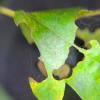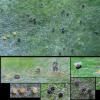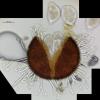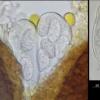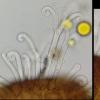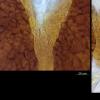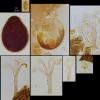
09-01-2026 17:41
Arnold BüschlenHallo, F. dilatata wird von vielen Bryoparasiten

10-01-2026 20:00
Tom SchrierHi all,We found picnidia on Protoparmeliopsis mur

07-01-2026 22:22
 Danny Newman
Danny Newman
Tatraea sp. on indet. hardwood The Swag, Great Sm

10-01-2026 01:18
 Danny Newman
Danny Newman
cf. Neovaginatispora fuckelii on indet. shrub Pre

07-01-2026 10:24
 Danny Newman
Danny Newman
Pezicula sp. on indet. hardwood Appalachian Highl

09-01-2026 10:08
 Blasco Rafael
Blasco Rafael
Hola, en el mismo habitat que la anteriorRetamaDia

08-01-2026 21:22
 Blasco Rafael
Blasco Rafael
Hola, He recogido esta muestra de Orbilia sobre Re

07-01-2026 17:29
 Marc Detollenaere
Marc Detollenaere
Dear Forum,On a barkless Populus I found some smal

10-11-2021 17:33
 Riet van Oosten
Riet van Oosten
Add-on topic http://www.ascofrance.com/forum/7059

07-01-2026 10:05
 Danny Newman
Danny Newman
cf. Chaetospermum on XylariaCosby Campground, Grea
Sawadaea bicornis on Acer campestre
B Shelbourne,
02-11-2024 16:34
• Sawadaea bicornis suggested by macro: Epiphyllous, many chasmothecial appendages, projecting all over, uninflated bases, convoluted apices.
• Confirmed by appendages in micro.
Habitat: On some leaves of Acer campestre, in a small grove of mature trees, with Quercus robur and Crataegus cf. monogyna, around a hedge between a field and road, part of a large area of agricultural land being 'rewilded' (Knepp Estate), Low Weald, southern England, early November.
Chasmothecia: Black and yellowish specks seen on most downy patches, gregarious, only seen on the top sides of the leaves.
Low magnification (20-40x): Patches formed of +/- sparse mycelium on the surface of the leaf, chasmothecia with more or less anchoring hyphae (detaching with age?), sub-globose to globose, initially yellowish, then blackish, when mature with many hyphae-like appendages protruding all over or from the top, bases uninflated, apices of appendages noticeably convoluted (branching), short conidiophores, hyaline, conidia appear to be growing in chains at the apices, but greater magnification required.
David Malloch,
02-11-2024 16:55

Re : Sawadaea bicornis on Acer campestre
Beautiful photos!
B Shelbourne,
03-11-2024 00:03
Re : Sawadaea bicornis on Acer campestre
Thank you. The credit must go to the fungus for producing such beautiful morphology.
